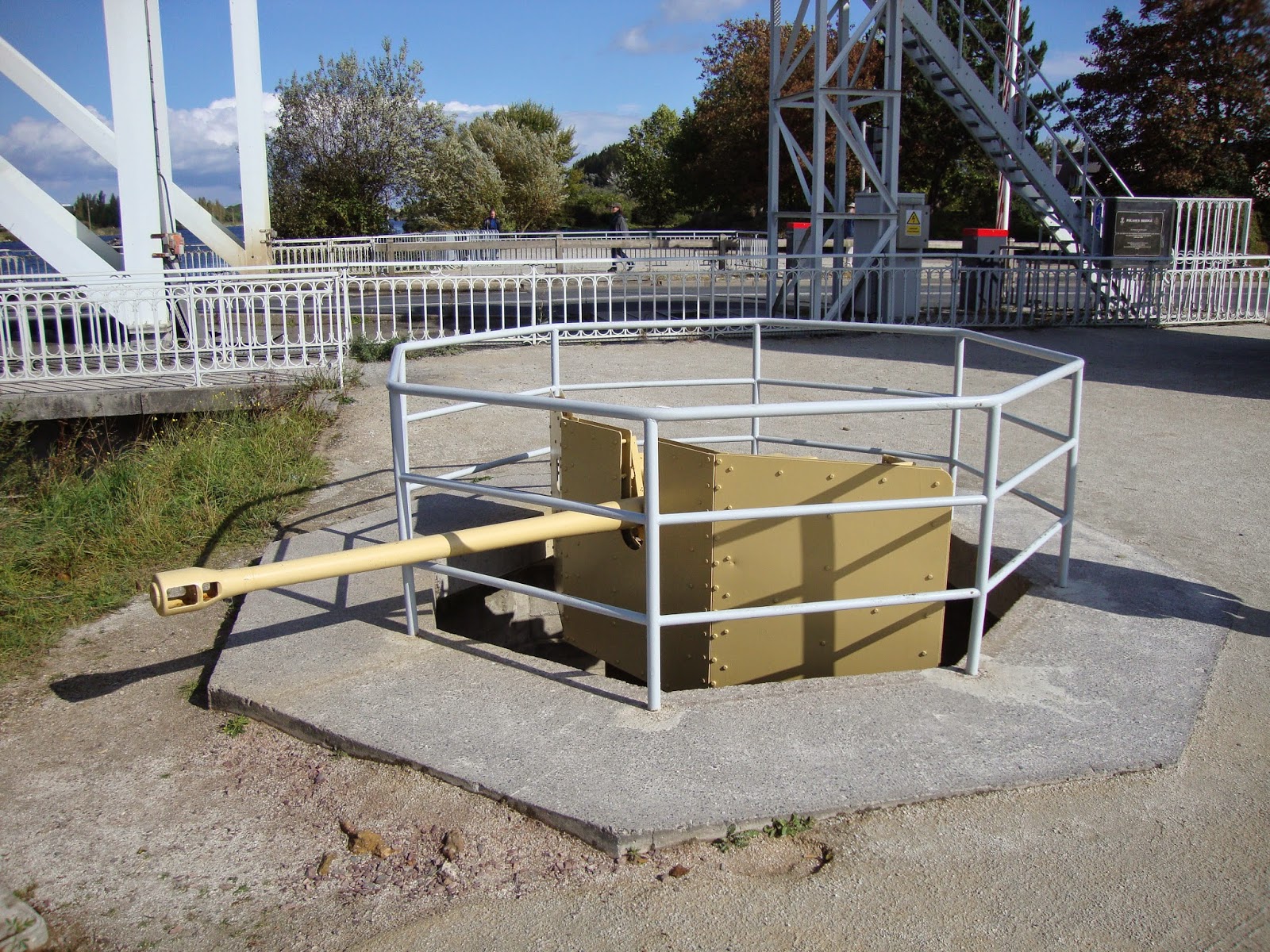The original bridge assaulted by the Ox and Bucks Light Infantry on the night of the 5th June now resides in the Pegasus Memorial Museum, a mere stone's throw from where it originally sat. Given the availability of the bridge in a variety of scales, thanks to the arrival of laser-cut mdf kits, I thought I would illustrate some details of the original bridge, and point out some items of interest related to it.
The Caen Canal (as well as the River Orne) would form major barriers to the troops coming up from Sword Beach on D-Day, so it was imperative that their crossings were secured quickly and comprehensively to avoid the invasion getting bottled up.
Pegasus Bridge (or the Benouville Bridge as it was known then) was captured by glider troops, relying on the element of surprise, and attempting to land as close as possible to the bridge.
 |
| The new bridge seen from the gliders' landing area |
 |
| Pegasus Bridge from the west |
Given the size and weight of these gliders - over 7 tonnes fully laden, and some 67 feet long, plus the fact that it was night, it was superb work on the part of the pilots that they landed safely at all, let alone so close to their intended target - an extraordinary feat!
 |
| Airspeed Horsa at the Pegasus Memorial Museum |
Thankfully the bridge was not well defended, although there were a handful of machine gun posts and this anti-tank gun:
The bridge itself was able to tip open, allowing canal traffic from the coast to Caen itself, hence the simple but bulky machinery at the eastern end of the structure:
 |
| The original bridge |
Looking around the bridge, there are numerous areas showing evidence of the Coup-de-Main attack and its dogged defence over the next few hours - bullet marks and other damage:
 |
| Shell and bullet holes. |
 |
| Ricochet marks. |
 |
| My mate Mog illustrates how soft the bridge's steel is by forcing his finger through it. Possibly. |
Having watched The Longest Day more than once, it was an interesting experience to be able to walk on and touch the bridge itself, where all these historical events took place. The rest of the Memorial Museum was just as fascinating, and I may post some pictures of it later on in this occasional series.
Until next time............




No comments:
Post a Comment